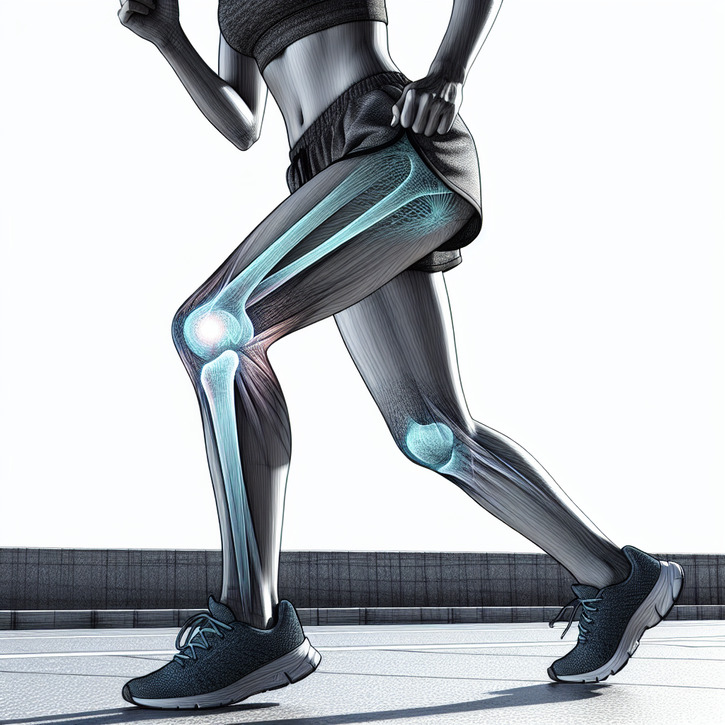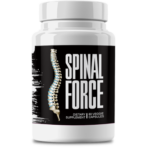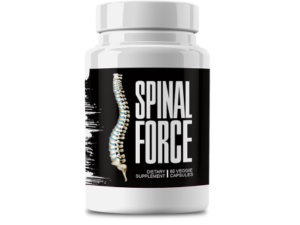This Village-Made Chinese Pain Reliever Eliminates Back And Joint Pain!
Discovering the Root Causes of Knee Muscle Pain: A Comprehensive Look

Knee Muscle Pain: What It Is and Why It Matters
Ever woken up feeling like your knee just isn't cooperating? You're not alone. Knee muscle pain is something many of us deal with at one point or another—it can slow you down and make everyday routines a real chore. Whether it's from the little nicks of daily wear or something more serious hiding beneath the surface, tracking down the true source of your pain is the first step to getting back on track. In this piece, we'll break down what knee muscle pain really entails, how to spot it early, and why having a good grasp on it can be a game-changer for your long-term well-being.
So, What Exactly Is Knee Muscle Pain?
It's not just that annoying twinge when you climb stairs. Knee muscle pain refers to discomfort that hails from the muscles surrounding your knee joint. It might leave you feeling stiff, sore, or even a little puffy around the area. Now, this isn’t the same as arthritis-driven joint pain; this troublemaker is rooted in the muscles and soft tissues that help keep your knee moving smoothly. And why does that matter? Because knowing where the pain originates can help guide the right kind of treatment to ease that muscle strain.
Getting to Know the Early Warning Signs
Have you noticed a nagging soreness after a workout or maybe a strangely limited range of motion? Those could be early red flags. Think about that dull ache creeping in when you rush out of bed or the burning sensation that comes on after some strenuous activity. Catching these hints early can be the difference between a minor inconvenience and something that really disrupts your day. So, listen to your body—it might just tell you what it needs before the pain gets worse.
The Big Picture: Why Understanding This Pain Is Crucial
Knowing about knee muscle pain goes beyond just the “ouch” factor. It's about digging into why it happens and figuring out how to keep it from giving you grief down the line. Whether you're a weekend warrior, recovering from a fall, or simply dealing with the effects of everyday activities, a clearer picture of your pain can guide you toward smarter treatment options for lasting relief.
The Knee’s Anatomy: A Closer Look
Our knees are pretty amazing when you think about it—they support your entire body weight and keep you moving gracefully (most of the time, anyway). To really get what causes knee muscle pain, it's worth taking a peek inside and understanding how muscles, tendons, and ligaments work together to keep things stable. A small misalignment here, a slight imbalance there, and suddenly you’re feeling discomfort.
The Star Players in Knee Stability
Picture your quadriceps and hamstrings as the superheroes of your thigh. The quads power your leg forward, while the hamstrings handle the bend. Don’t forget the calves, which help with balance and movement. When these muscle groups are in tip-top shape, your knee gets the support it needs, but when they’re off their game, pain can set in. It’s all about balance.
Other Key Structural Components
Beyond the muscles, tendons connect these muscle fibers to your bones, turning your muscle power into movement. Ligaments, those unsung heroes, stabilize your joint and keep everything in check, while bursae act as cushions to reduce friction. When any of these structures get inflamed or injured, your muscles might overcompensate and start to complain—and we all know how that ends: with pain.
The Sneaky Culprit: Poor Alignment
Ever thought about how a tiny misalignment might be causing a cascade of issues? If your hips, legs, or lower back aren't aligned just right, your knee muscles have to scramble to keep things moving, leading to extra strain. Even subtle issues, like poor posture or repetitive movements on the wrong form, can slowly build up into a problem. Sometimes, a few strategic adjustments in how you move (or even just the right pair of shoes) can really ease that strain.
Digging Deep: What Triggers Knee Muscle Pain?
When it comes to knee muscle pain, knowing what sets it off is half the battle. Pinpointing the trigger—be it overuse, a nasty injury, or mechanical misalignments—can help you tackle the problem head-on rather than just dousing the flames.
Overuse and That Repetitive Strain
If you've ever gone for a run or engaged in a high-intensity workout without giving your body the break it needs, you might know the aftermath all too well. Repeating the same motion over and over often leads to inflammation and just plain tired muscles around your knee. Sometimes the fix is as simple as taking a breather and tweaking your training schedule so your body gets a chance to repair.
When Accidents Happen: Traumatic Injuries
We've all had that clumsy moment—maybe a fall during sports or a misstep that left your knee hurting for days. These sudden injuries can mess with the muscle function and stability around your knee. After such an incident, the body naturally ramps up inflammation to heal, which can prolong the discomfort. Quick action, rest, and a good consultation with a professional can go a long way in ensuring your knee bounces back.
Biomechanical Imbalances: The Hidden Offenders
Ever feel like your body is working unevenly? Imbalances in how your muscles function can lead to some muscles overdoing it while others barely contribute. This disharmony can easily spell trouble for your knee. Becoming aware of these imbalances and then working with a therapist to even things out can really make a difference.
How Your Lifestyle Plays a Part
Believe it or not, the everyday choices you make—what you eat, how you exercise, even how you sit—can either be a friend or foe to your knees. Taking a good look at your routine might reveal some sneaky habits that are contributing to muscle pain.
Exercise: Friend or Foe?
There’s no denying that exercise is great for your overall health, but if done wrong, it can lead to knee muscle pain. High-impact activities or using poor techniques can strain your muscles. On the flip side, low-impact exercises like cycling and swimming can build strength without putting too much stress on your knees. A little rest here, a dose of good form there, and you might just keep the pain at bay.
The Weighty Issue of Weight Management
Carrying extra pounds can literally put extra pressure on your knees, which in turn can worsen muscle pain. Even a modest weight drop can often mean a whole world of difference when it comes to easing the strain on your knees. Coupling a smart diet with regular moderate exercise has proven benefits not just for your overall health but specifically for your knees.
Everyday Movements That Might Be Hurting You
It might surprise you, but even your regular, day-to-day activities—like sitting too long at your desk or taking an awkward step on uneven pavement—can add up and lead to knee discomfort. Small tweaks, such as regular breaks, a more ergonomic setup at work, or wearing better supportive shoes, might be all it takes to fend off the cumulative wear and tear.
How Do You Know When to Get Help?
When knee muscle pain starts becoming a frequent visitor, it's time to dig a little deeper into what might be going on. A mix of a good physical examination and modern imaging techniques can peel back the layers and reveal the real culprit behind your pain. This comprehensive approach helps ensure that any treatment plan doesn’t just mask the symptoms but tackles the underlying issue.
What to Expect During a Clinical Evaluation
Typically, your doctor will start by chatting with you about your symptoms, your medical background, and any memorable incidents that might have triggered the pain. They might run a few tests—think checking your range of motion or muscle strength—to see exactly how the pain is affecting you. Combining your own story with these tests really helps in catching the root cause of the muscle imbalances or injuries.
Using Imaging Tests for a Closer Look
Sometimes, a simple chat and physical exam aren’t enough, and that's where imaging tests like X-rays, MRIs, or ultrasounds come into play. Even though people often associate these tests with joint issues, they’re actually pretty handy for spotting inflammation or even tiny tears in the muscles around your knee that you might miss during a regular exam.
When Is It Time to See a Professional?
If you're stuck with persistent pain that just won't quit, or if swelling and reduced knee function are getting in the way of your day-to-day life, it might be time to consult a professional. Don’t wait until it really becomes a problem—getting a timely diagnosis could well be your ticket to a quicker, smoother recovery.
Treatment and Relief: What Are Your Options?
When it comes to treating knee muscle pain, there isn’t a one-size-fits-all approach. More often than not, the treatment plan is as unique as you are—taking into account what’s causing the pain, how intense it is, and your overall health picture. Whether it’s a matter of some good old rest and ice, a tailored physical therapy regimen, or in extreme cases, even surgery, the goal remains the same: restoring function and keeping that pain at bay.
Starting with the Basics: Rest, Ice, and Physical Therapy
For many folks, easing knee muscle pain starts with simple, tried-and-true methods. Resting the knee, applying ice to tackle inflammation, and using over-the-counter remedies can often do wonders. Pair these up with a guided physical therapy program that focuses on strengthening and stretching, and you’ve got a solid recipe to get that knee moving more comfortably.
When It's Time for More Advanced Methods
Sometimes, the basics just aren’t enough. If you’re still in pain after trying conservative treatments, your doctor might suggest more advanced options—think minimally invasive procedures, specialized injections, or very rarely, surgery. While surgery is definitely not the first go-to, modern techniques have made recovery much quicker and more predictable than in the past.
Holistic and Integrative Care: A Broader Approach
Lately, more people are turning to integrative care to manage knee muscle pain. Combining conventional medicine with alternative therapies like acupuncture, massage, or even diet adjustments can sometimes provide that extra boost in your healing process. Everyone’s a bit different, and a mix-and-match approach that addresses both the physical and sometimes emotional side of pain can really set you up for longer-lasting relief.
Looking Ahead: Prevention and the Future of Knee Health
The old saying “prevention is better than cure” couldn't be more spot-on when it comes to knee muscle pain. Building habits that support strong, healthy knees isn’t just about avoiding pain today—it’s an investment in your future. Whether it’s through regular exercise, smart lifestyle choices, or keeping an eye on emerging treatments, there’s plenty you can do to keep your knees in great shape.
Smart Daily Habits and Exercises
Prioritize routines that naturally strengthen and support your knees. Simple stretches, low-impact cardio, and targeted strength training for your legs and core can build a sturdy foundation. And hey, don’t underestimate the power of good posture and even a bit of mindfulness throughout your day; these subtle habits can take a surprising toll off your knees over time.
The Bright Future of Knee Pain Research
It's an exciting time over in the world of knee health. Researchers are busy exploring everything from regenerative medicine and stem cell therapies to new physical therapy techniques. These advances promise not only to ease pain but also to repair muscle damage more effectively. Staying updated on these breakthroughs can help you have more informed, open conversations with your healthcare provider.
Keeping Your Knees Happy for the Long Haul
The secret to long-term knee health is a mix of consistency and adaptability. Regular workouts, periodic check-ins with your doctor, and a willingness to modify your routine as new treatments arise can all play a huge part in keeping knee pain at bay. In essence, it's about staying proactive and mindful—being in tune with your body and making adjustments before minor issues get out of hand.








